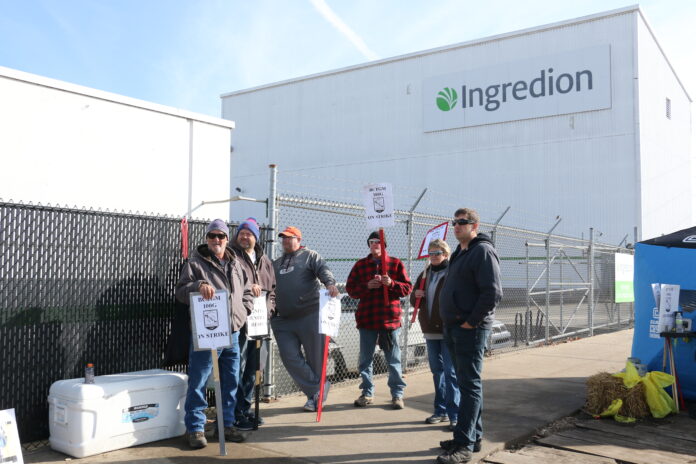
With a union strike against the Ingredion plant in Cedar Rapids nearing the end of its fourth month, there’s a perception that more industries are seeing worker strikes than in past years. And that’s more than perception. The Guardian reported in late September that union election petitions nationwide increased 58% in the first three quarters […]
Already a subscriber? Log in
Want to Read More?
Get immediate, unlimited access to all subscriber content and much more.
Learn more in our subscriber FAQ.
- Unparalleled business coverage of the Iowa City / Cedar Rapids corridor.
- Immediate access to subscriber-only content on our website.
- 26 issues per year delivered digitally, in print or both.
- Support locally owned and operated journalism.
Do you want to read and share this article without a paywall?
Click here to purchase a paywall bypass linkWith a union strike against the Ingredion plant in Cedar Rapids nearing the end of its fourth month, there’s a perception that more industries are seeing worker strikes than in past years.
And that’s more than perception. The Guardian reported in late September that union election petitions nationwide increased 58% in the first three quarters of fiscal year 2022, compared with 2021. And public support for labor unions is at its highest point since 1965, according to the most recent Gallup poll, with a 71% approval of labor unions in the United States.
A University of Iowa labor relations expert says numerous factors affecting laborers have led to an uptick in strike activity nationwide in recent years, including local strikes at Ingredion and at King’s Material in Cedar Rapids.
Robin Clark-Bennett, director of the University of Iowa’s Labor Center, which has focused on challenges facing Iowa workers for more than 70 years, said the rate of strike activity nationwide had been increasing in 2018 and 2019, and the pattern has re-emerged in the wake of the COVID-19 pandemic. One of the themes that’s emerged and expanded since the 1980s is that of pay equity, she said.
“There’s been a pattern across industries of creating second-tier pay structures, in which the new generation of workers either had to postpone their hopes of getting up to the standards that workers who've been there previously had achieved, or never would get there,” Ms. Clark-Bennett said. “And so resolving those two-tier pay structures has really been a theme across a lot of those strikes – the idea that people shouldn't have to work next to each other and earn significantly different pay for doing the same job.”
Another common theme, particularly in the manufacturing sector, involves workers who have generational legacies with the same firm.
“That's certainly the case with Ingredion,” Ms. Clark-Bennett said. “It was the case in (the) John Deere (strike in Davenport and other locations). And it was a very personal struggle in the sense that (your) grandparents, (your) parents, worked hard to establish a reputable profitable company and to secure living wages, and that that's a legacy that they feel it's now their turn to protect.”
Other common issues include scheduling conflicts and company commitments to workers who continued to perform their duties during the COVID-19 pandemic, Ms. Clark-Bennett said.
“Another theme that came up in the Marriott strike just before the pandemic was that one job should be enough,” Ms. Clark-Bennett said. “Economists have chronicled 30 to 40 years of stagnant wages as profits, productivity and as CEO salaries went up. There’s a sense that wages are stagnating and workers are forced to either take on second jobs or work a lot of overtime to make ends meet. The pandemic just supercharged all of that.”




